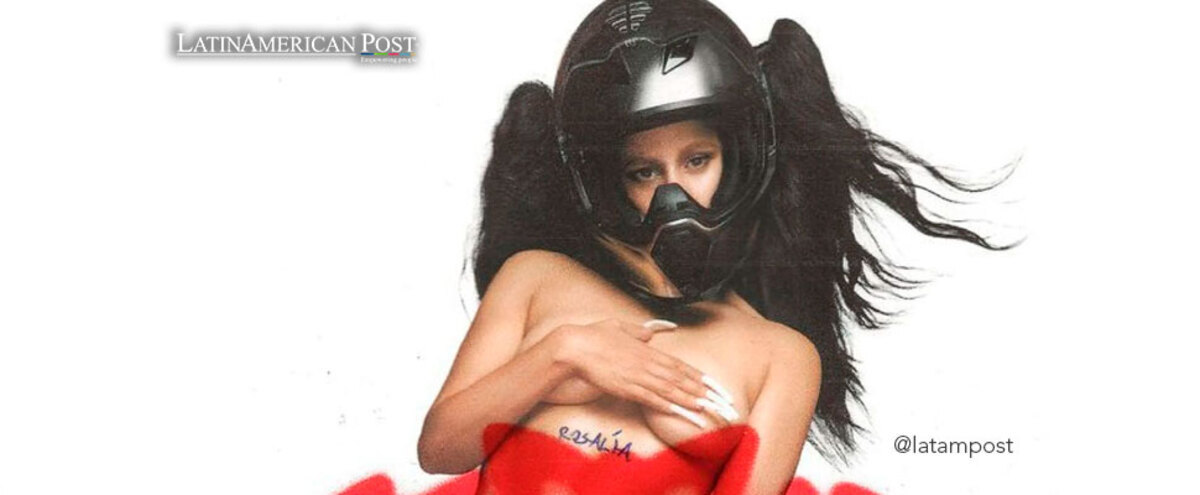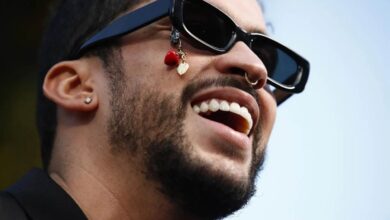Rosalía’s “Motamami”: a cultural mix as an experiment
With her new album, Rosalía experiments and allows herself to transform, showing that her career still has a long way to go. This is our review of "Motomami", by Rosalía.

Photo: YT-Rosalia
LatinAmerican Post | Vanesa López Romero
Listen to this article
Leer en español: “Motamami” de Rosalía: una mezcla cultural como experimento
If we could use a word to define "Motomami", Rosalía's third album, it would be "transformation". This shows not only the transformation of the artist, but also of himself, since it is an album that changes drastically as it progresses, but remains faithful to that characteristic of challenging, of always being different. The 16 songs that make up the album also show Rosalía's goal: to experiment with what is at hand and in the world of music what will always be at hand are samples. His songs are, then, compositions that use a lot and manage to mix cultures, genres and emotions.
An experiment announced
But this has been a transformation that has been developing along with her career. Already with "Los Ángeles" her first album, Rosalía showed that affection that she has to experiments. By 2017, the year in which she debuted with this album, Rosalía gave her something to talk about because it was mainly made up of sounds that refer to flamenco, and although this already attracted attention due to the fact that she was so young (she was 23 years) and built her career through an old school genre, what struck her most was the fact that she combined flamenco with R&B and that, at the same time, she as an artist had an urban aesthetic. What was Rosalia then? With his experimentation and her style, was she already announcing what her career would become?
Read also: Get ready with the best songs for Jamming 2022
Her second album did not wait long. "El Mal Querer" was released in 2018 and was both praised and criticized, because many people considered that, without being a gypsy, Rosalía had largely used both the symbology and the music of this culture, which was considered as cultural appropriation. In a press conference, Rosalía said that doing this was due to privilege, but that she considered cultural appropriation something positive. In "El mal querer" the artist once again used flamenco, but experimented with pop and with touches that were increasingly closer to the urban. Once again, she announced that for her, the transformation of her music and of herself as an artist was what was slowly defining her as a musician.
"Motomami", experimentation to the limit
It took 3 years for Rosalía to release an album again. The release was announced on November 2, 2021 and on November 11 the first single "LA FAMA" was released, which also had a featuring with The Weeknd. After this, while Motomami was expected to be released in mid-March, Rosalía released another three singles: "SAOKO", "CHCKEN TERIYAKI" and "HENTAI". Thus, critics rushed to dissect the album without it even having come out. A column published in El País compared her to Miley Cyrus and she was strongly criticized for having gone from referencing Federico García Lorca to making simplistic rhymes and "sharing too much" on social networks.
But if we stop for a moment to review these types of comments, we should first ask ourselves, what's wrong with being compared to Miley Cyrus, an artist who, despite her media struggle, has stood up strongly against her detractors and against the image that someone more created of her in her childhood? And, why are these criticisms that are usually made exclusively to female artists? It is enough to mention the case of Billie Eilish (who, by the way, has also collaborated with Rosalía) who did not make a giant change in her music, but in her style and was criticized for showing her body. With "Motamami", we are once again reminded that female artists are still pigeonholed within the music industry.
Rosalía goes against the current, she goes so against that she contradicts herself. Yes, she goes from referring to García Lorca to repeating over and over again "Fuck el estiilo / Fuck el style / Fuck el stylist", because that is what she wants to show, that for her changes are not a big deal, that her transformation It's not something that just happens and that's it, but something that has been announced since its musical beginnings. But, she also wants to show that she can do it all, that she can be loyal to Willie Colón, Camarón de la Isla, Niña Pastori but that she also looks up to Tego Calderón, MIA, or Wisin y Yandel. In a way, Rosalía puts what could correspond to "high and low culture" into a blender and shows herself, which can be "Los Angeles" and "El Mal Querer", but it can also be "Motomami".
Finally, we must mention the openly sexual nature of this album, which with songs like "Hentai" reminds us that women are not "sexual objects" but sexual beings, who also seek pleasure and experience from this area. With its release, the song generated, as expected, comments against the artist for "undervaluing herself", to which Rosalía replied "That for me makes it more evident that women are still expected to be feminine and that's it. And, on the other hand, I refuse that. I am many more things and among them feminine".
"Motomami", is then an open letter from Rosalía, one in which she lets us know that she is like that and that's it, because possibly she will continue to do so. It is not that his changes respond to an audience and an industrial need, it is that his changes and his musical style were clear from his debut.




